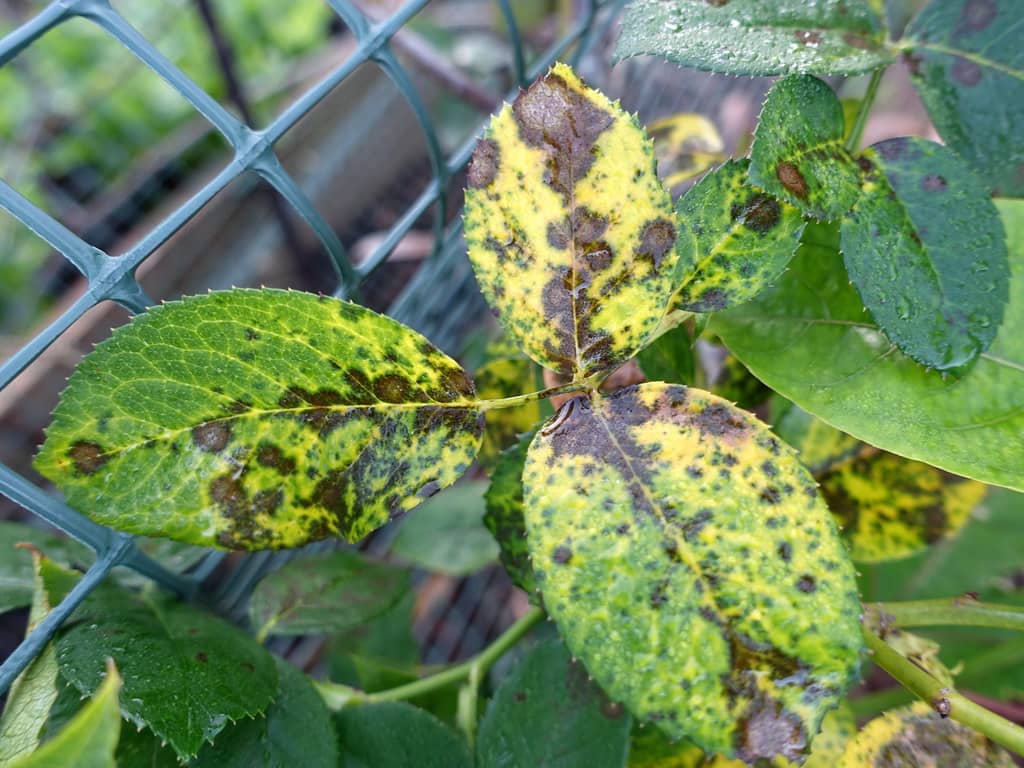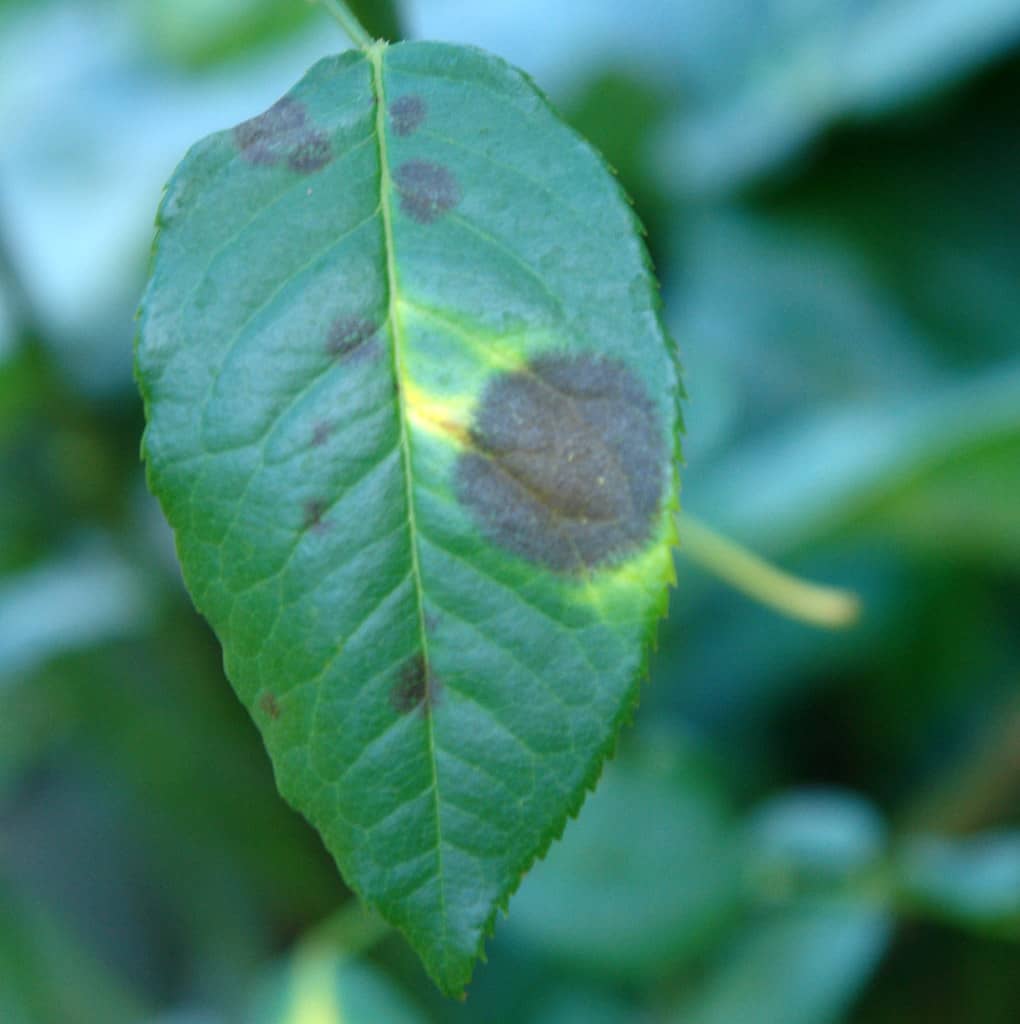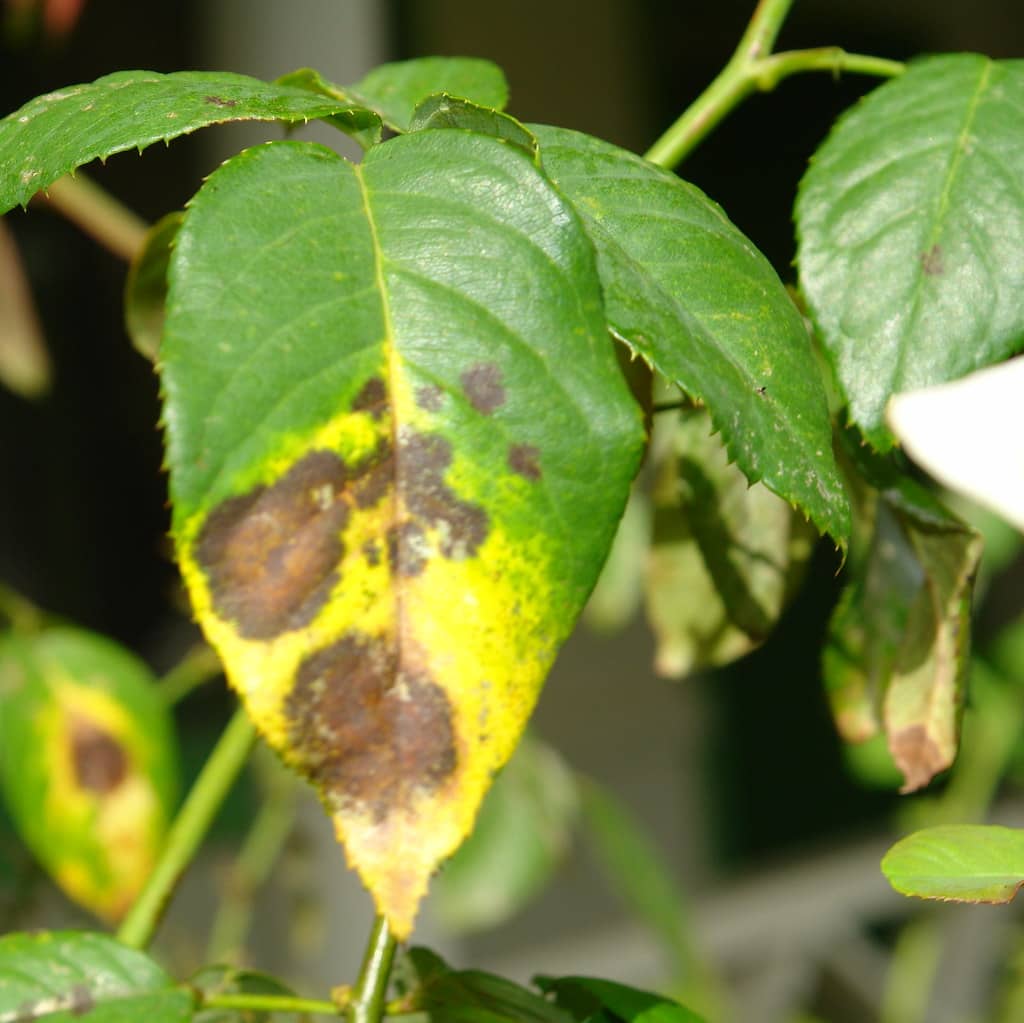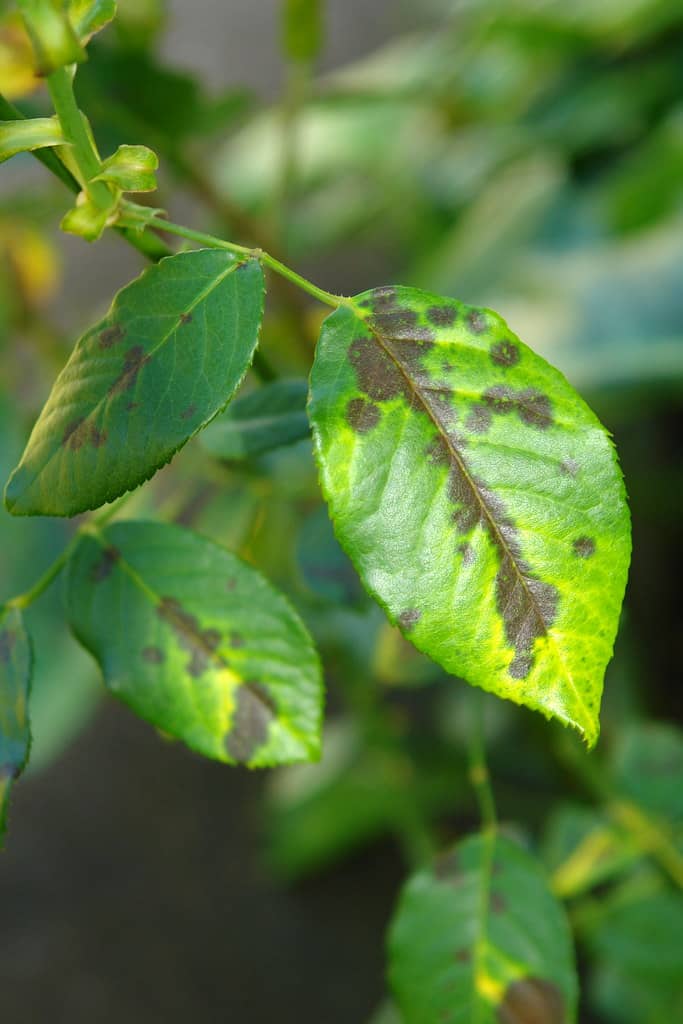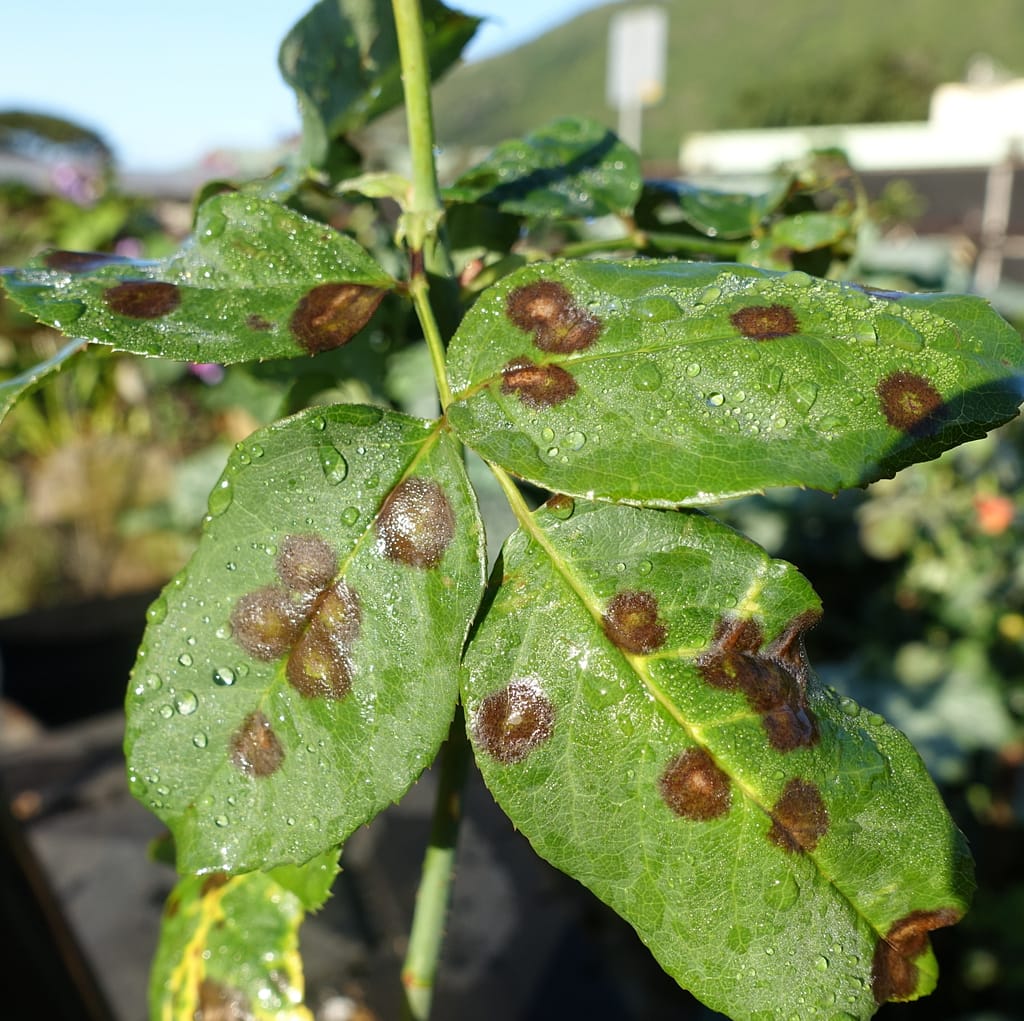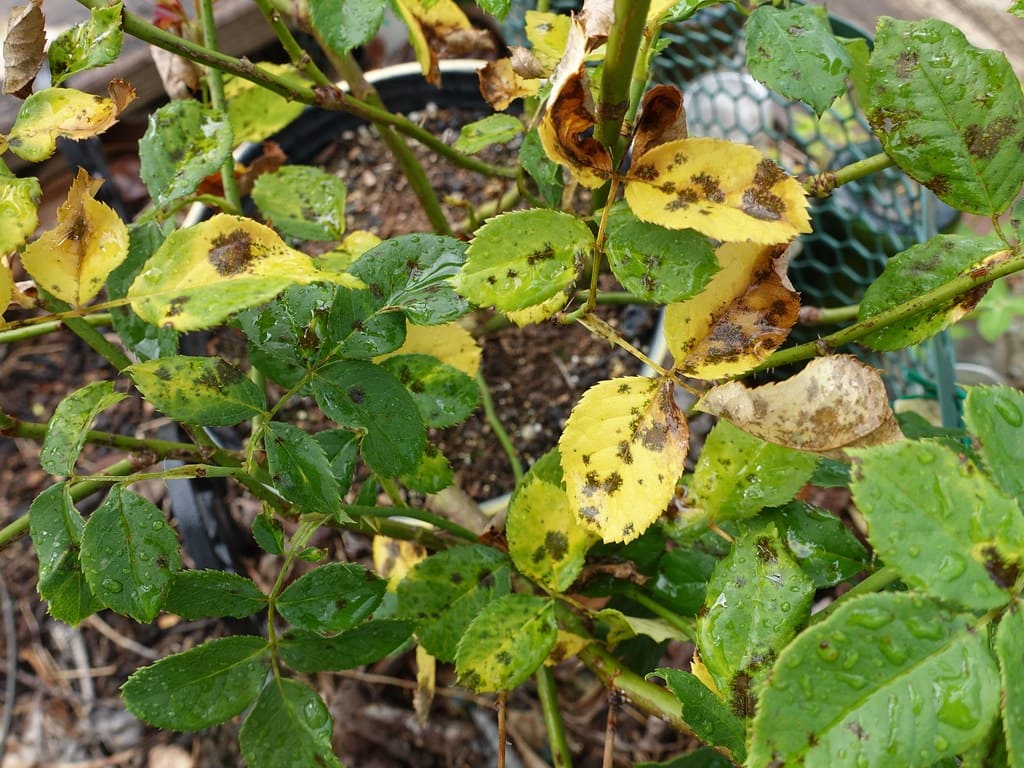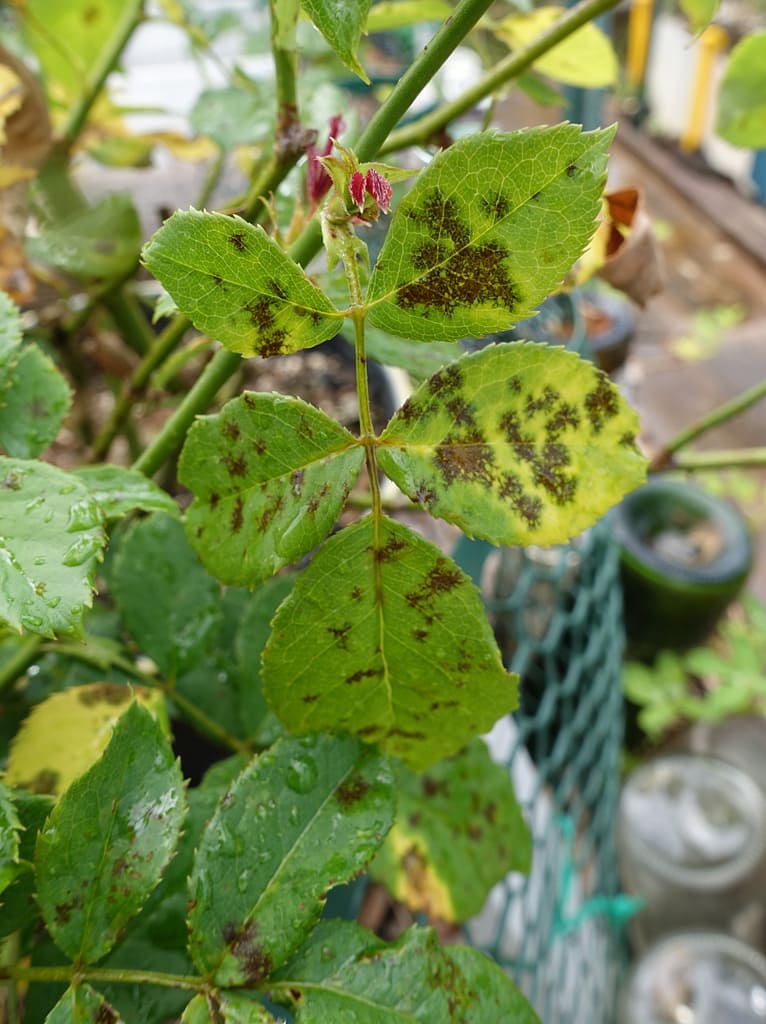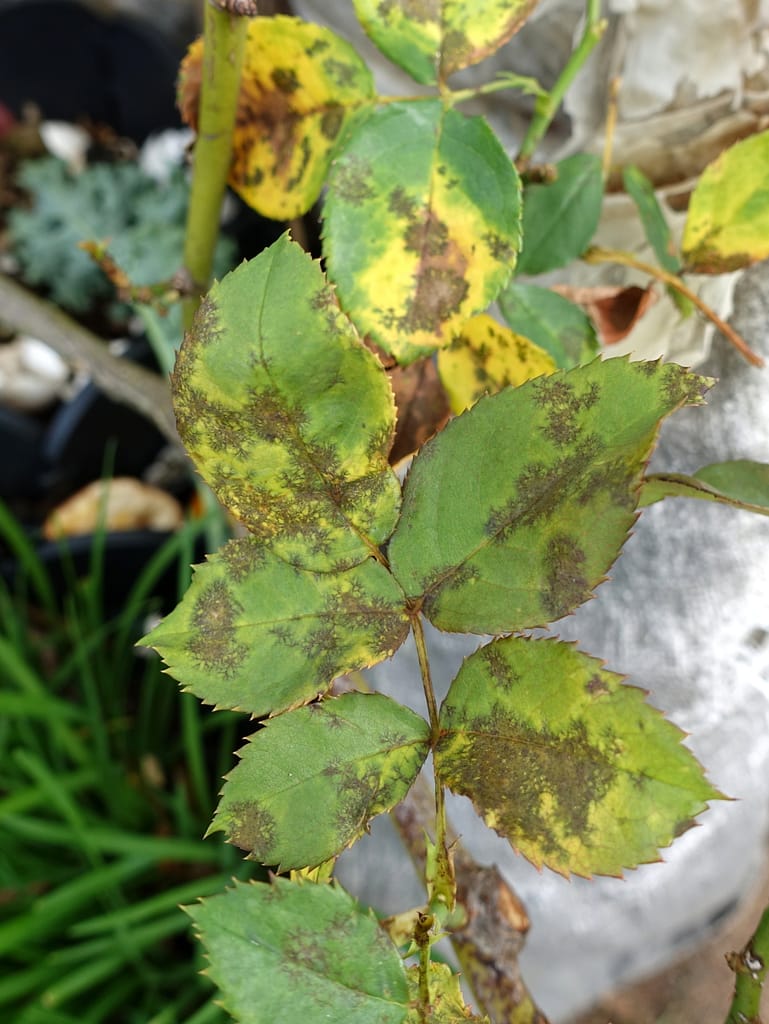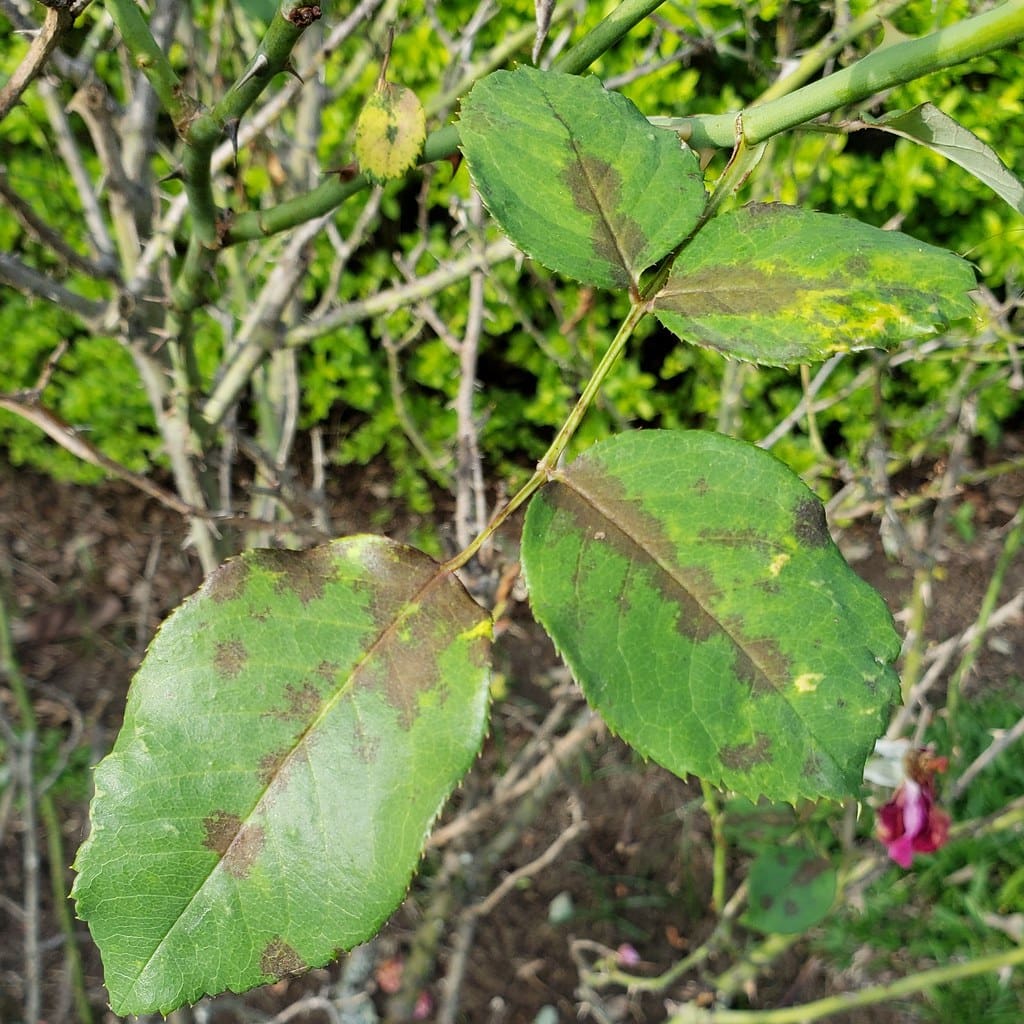What is Black Spot?
Black spot in a serious fungal disease that affects roses wherever they are grown. This disease can cause defoliation if left unchecked.
Disease Cycle
The fungal spores of diplocarpon rosae will live on the living or dead leaves, and on infected stems of roses. It spreads through splashing water and requires the leaf surface to stay wet for 7 hours or more to produce spores or infect additional surfaces.
Symptoms and Identification of Black Spot
Black spot is mainly identified by, you guessed it, a black spot. As the spots enlarge they turn the leaves yellow and they drop off. Dark black lesions on the stems are also an indication of infection. Stems are the main source of infection from year to year.
For images of roses with black spot scroll to the bottom for help in identifying if it is affecting your plant. If you have photos you’d like to add to the photos below you can send them to [email protected].
Management of Black Spot
Monitoring
You will first notice black spot on the lower or inner leaves. This is due to moisture requirements for spore germination. This disease is most common in the Spring with the occasional rains adding to the problem. Temperatures above 65° are required for spore germination, while temperatures over 85° inhibit spore germination.
Cultural Control
Control of this disease can be achieved in several ways:
- Plant roses in full sun
- Prune branches to provide good airflow
- Destroying and removing infected leaves and stems
- Avoid overhead irrigation, or do it in the morning to allow time to dry
- Plant resistant varieties
Miniature and hybrid tea roses tend to be more susceptible to black spot.
Chemical Control
Plenty of options of fungicides are available to treat black spot. They typically need to be applied every 7-14 days and rotated. The following fungicides are a few of the many options to treat black spot:
- Pesticides registered for use include
- Captan
- Chlorothalonil (Daconil)
- Copper
- Ferbam
- Mancozeb
- Maneb
- Triforine (Funginex)
- Sulfur
- Thiophanate methyl (Cleary 3336)
- Ziram
Always check the label for instructions on application.
Different types of fungicides can create a resistance to that fungicide if not rotated properly. Mancozeb, Chlorothalonil (Daconil), and Captan can all be used at any time of year without worrying about a tolerance being developed. To learn more about the mode of treatment, and developing resistance you can visit Mississippi State Universities article: https://extension.msstate.edu/sites/default/files/publications/publications/p2827.pdf
Toxicity
As with almost all chemicals there is an associated toxicity rating for the active ingredients of different pesticides, fungicides, herbicides, and rodenticides. Here are a few places you can learn more about their toxicity with a table of their rating and what the rating means (first is the preferred):
http://pods.dasnr.okstate.edu/docushare/dsweb/Get/Document-3591/EPP-7457web.pdf
https://extension.psu.edu/toxicity-of-pesticides
These lists do not discuss how long these chemicals stay in the environment, how they affect other plants, or how they affect other beneficial organisms.

